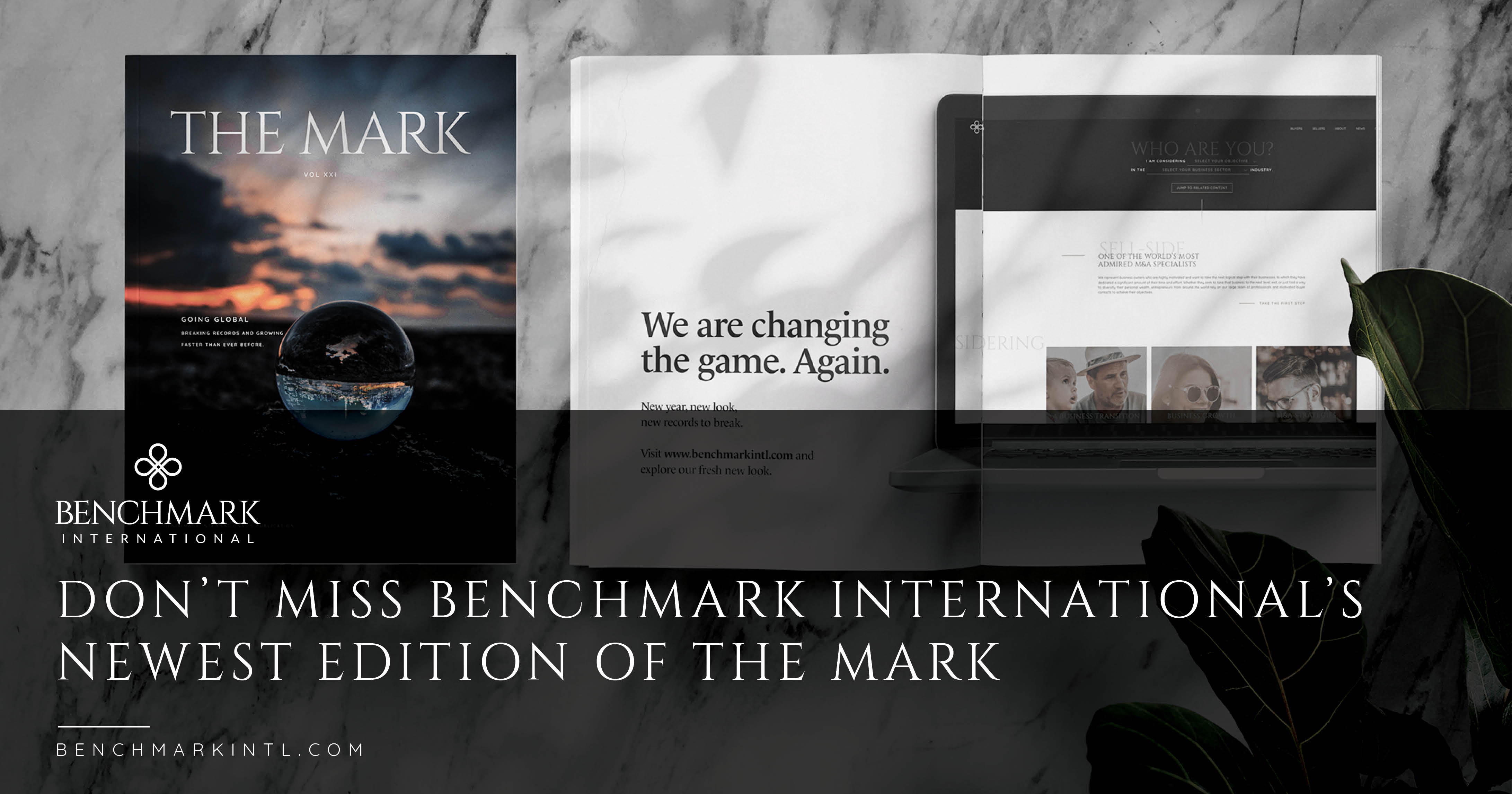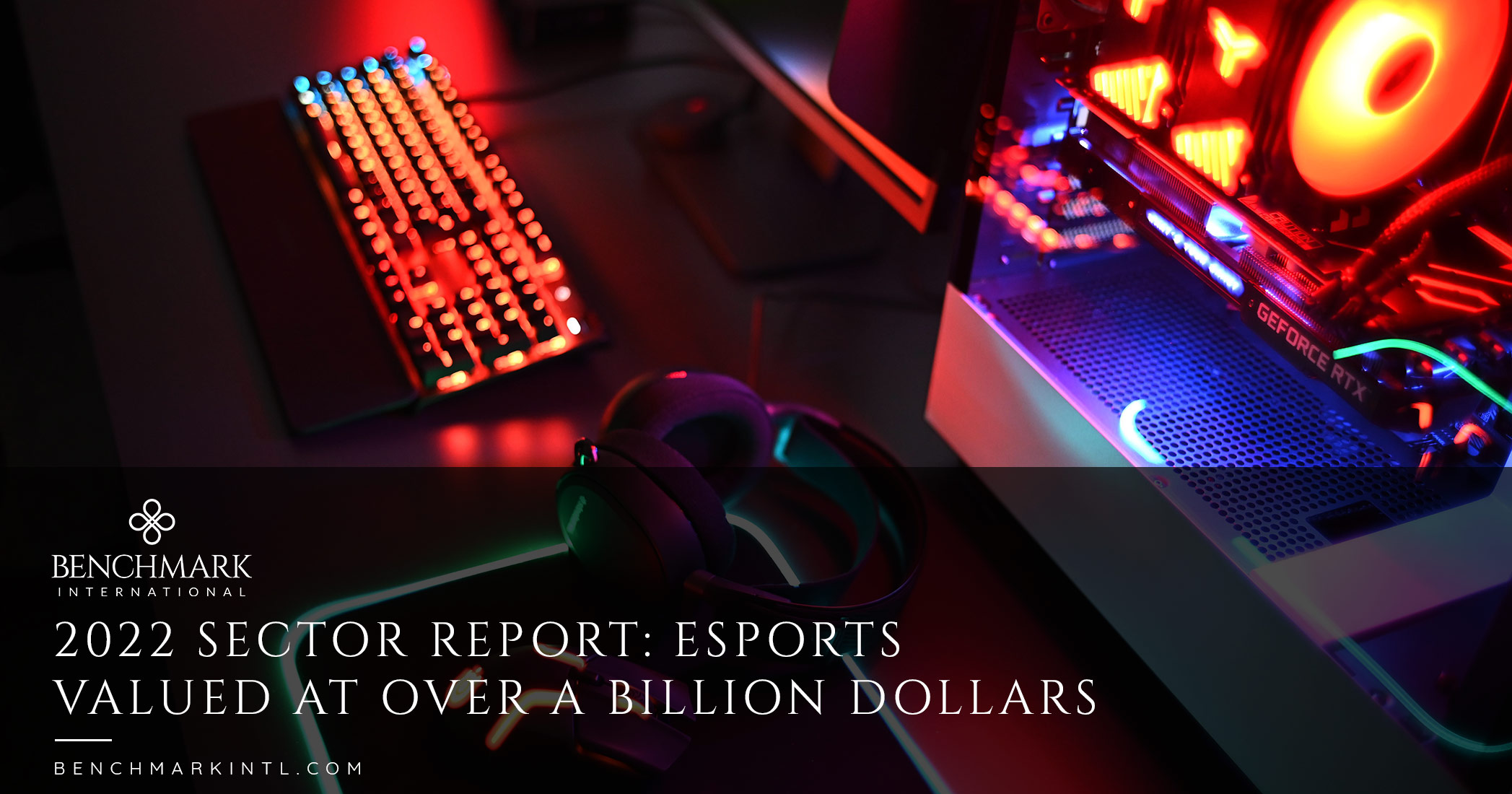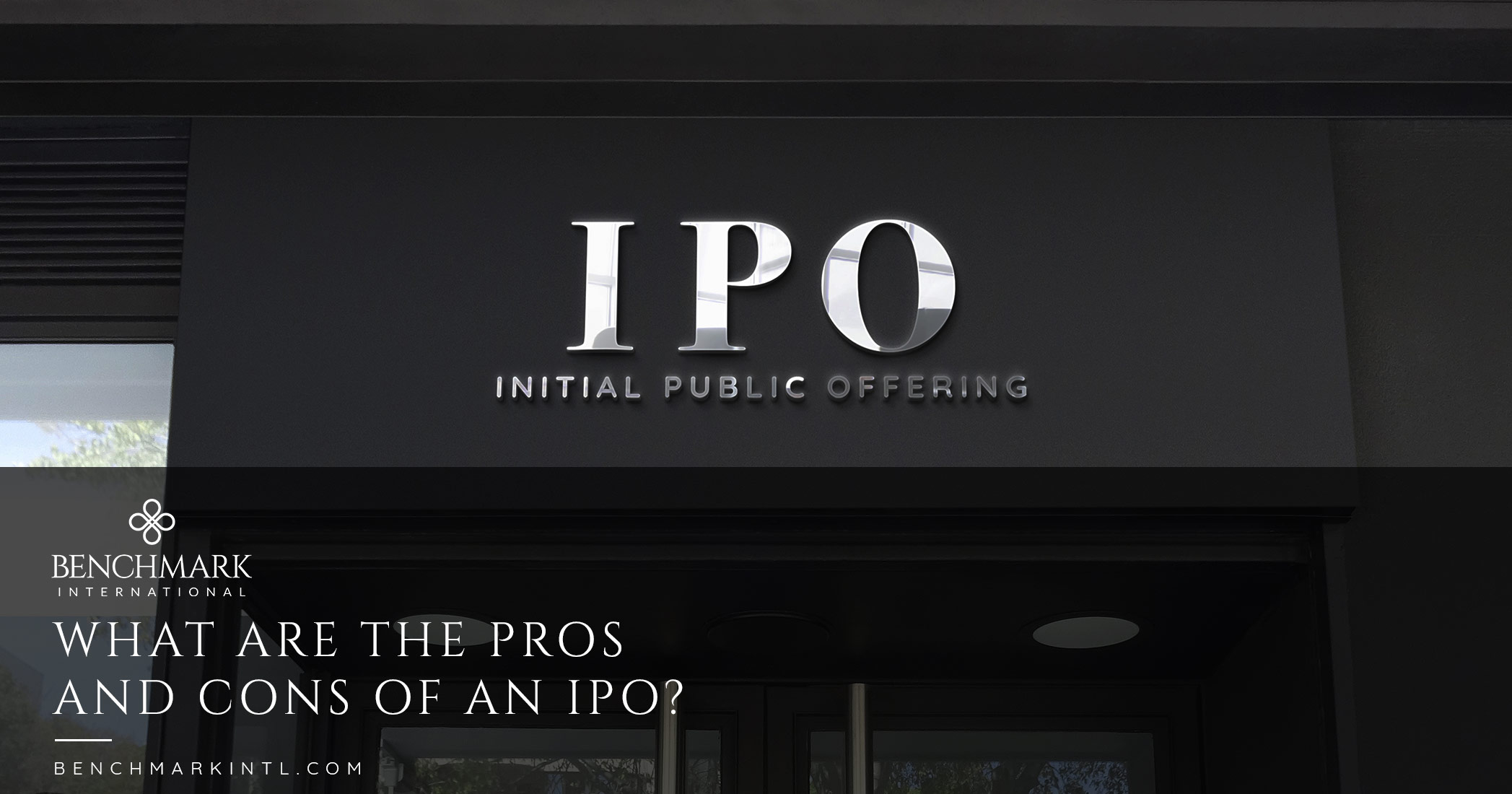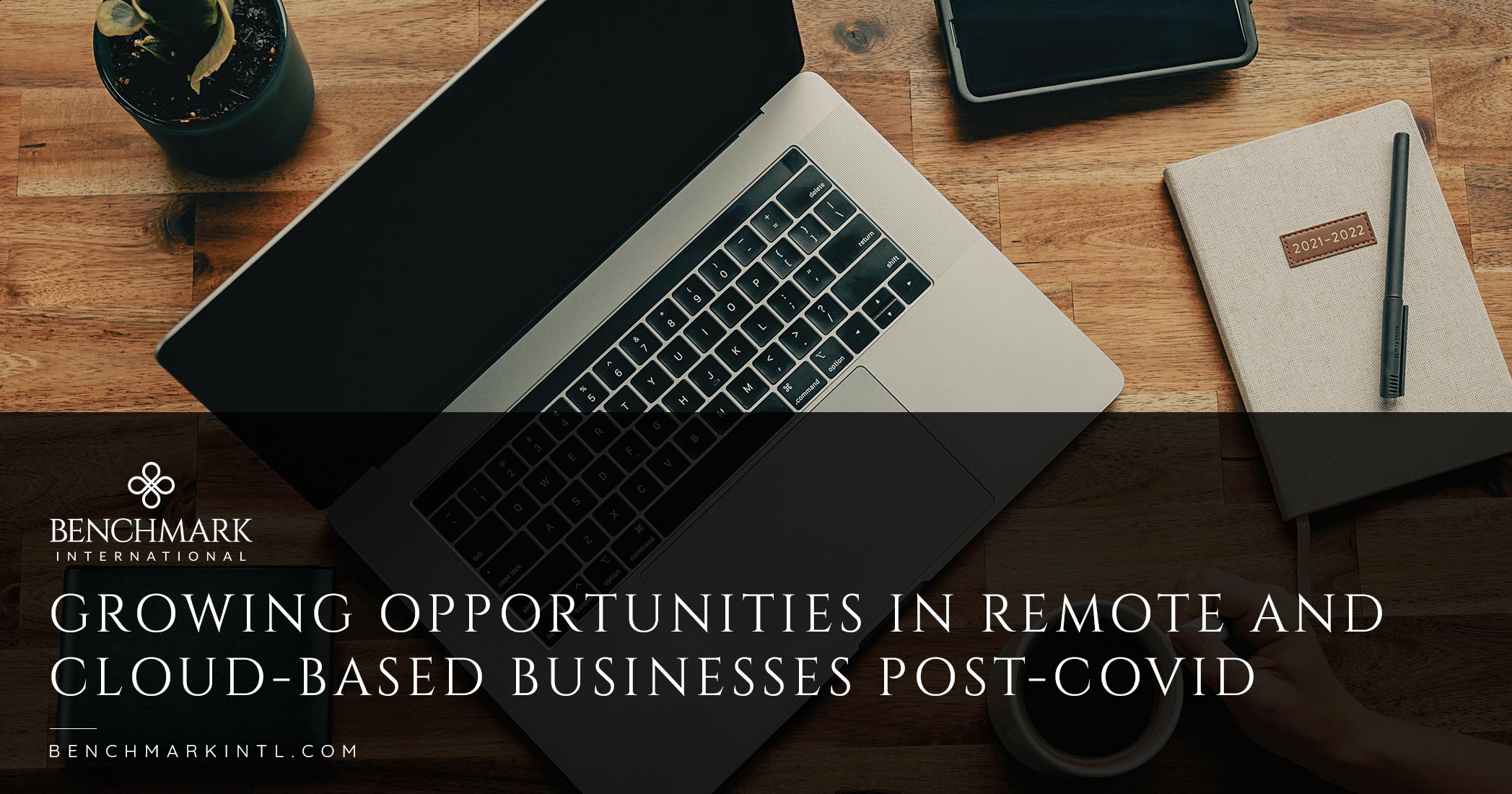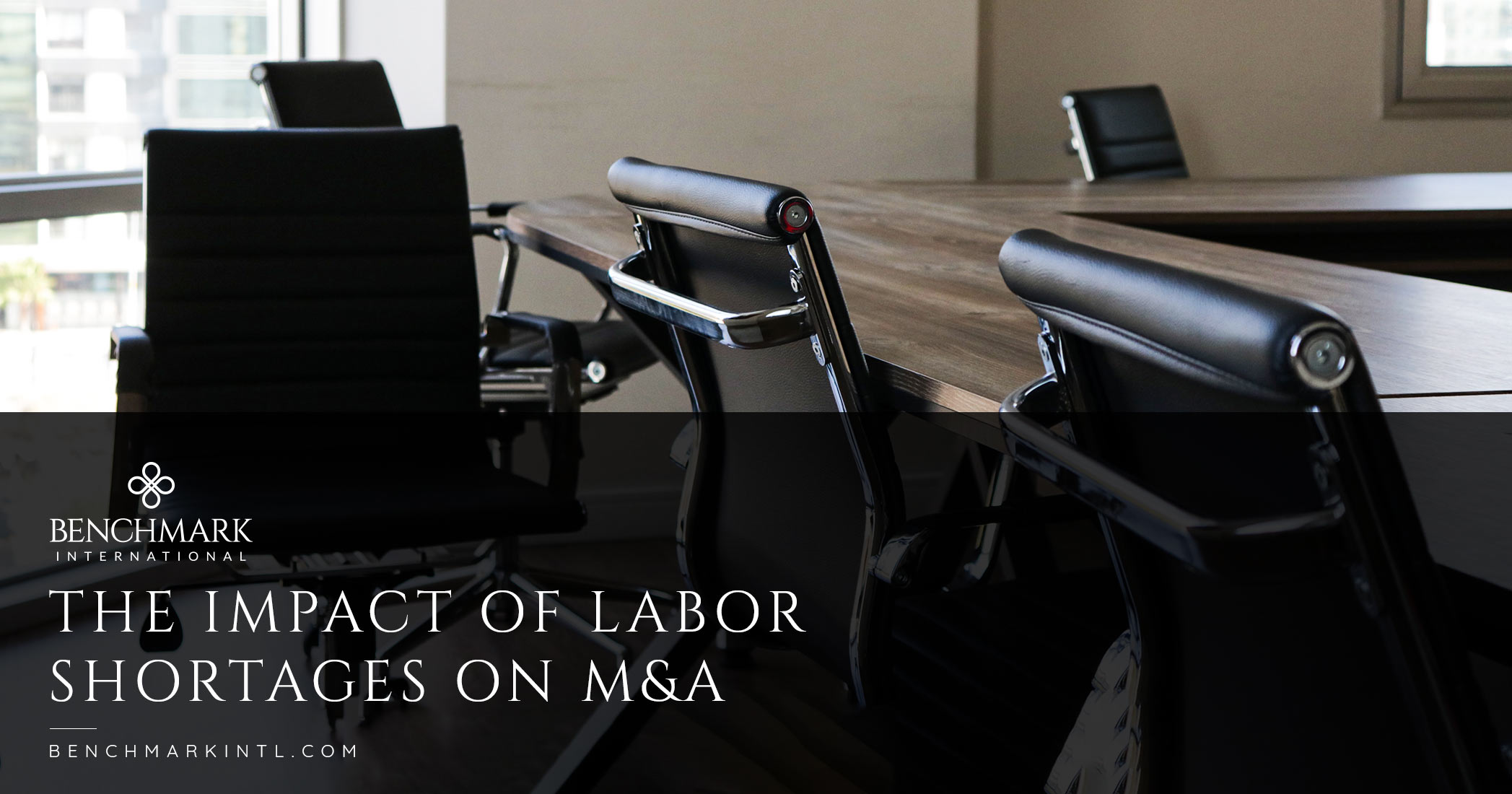Benchmark International is pleased to announce the acquisition of Corporate Health Ireland (CHI) by UK-based PAM Occupational Health Services Group.
Archives
Benchmark International Has Facilitated The Transaction Between Corporate Health Ireland (CHI) And PAM Occupational Health Services Group
Want To Sell? What To Look For In An M&A Firm
If you are considering selling your company, you have several options for pursuing the sale, and you have quite a few decisions to make. And this is a journey you do not want to take lightly. You’ve worked so hard to build your business. When you sell it, you want everything right to get the value you deserve. In addition to extracting value, you want the process to be as painless as possible. These are the reasons you should consider having the representation of a reputable mergers and acquisitions firm. Partnering with the right M&A advisor can significantly affect your sale price.
READ MORE >>Share this:
What Is The Denominator Effect?
When it comes to selling your business, and you are considering waiting or pausing, there are several factors to consider, such as market conditions and interest rates. But there is also something called the denominator effect.
READ MORE >>Share this:
The Public-To-Private Trend For New Paths To Growth
Many individuals at large institutions that trade in the public markets are turning to private ownership and pursuing majority equity positions in lower middle-market companies and even creating their own funds. This public-to-private trend is partially being driven by current and expected public market volatility over the next few years, combined with individual business circumstances, all with the expectation for a brighter future. The recent stock market instability is presenting attractive opportunities for companies that may perform better in the private market. Private equity and private investors have ample capital available to them at a time when public market valuations are sinking. The interest is coming from both private equity funds and strategies, as private markets are gaining ground on public markets. Take-privates are on pace for the second year in a row at $100 billion or more in deal value. That is a first for the industry in more than a decade.
READ MORE >>Share this:
Don’t Miss Benchmark International’s Newest Edition of The Mark
Share this:
The Green Economy Update And Outlook
The global green industry is forecast to grow at a significant rate between 2022 and 2026. Over the past decade, the green economy’s market capitalization grew from $2 trillion in 2009 to more than $7 trillion in 2021. It also nearly doubled its share of the global investable market from 4% to more than 7%. Last year, the market grew at a steady rate and is expected to continue to do so with the growing adoption of strategies by key players.
READ MORE >>Share this:
The Surge Of Cryptocurrency M&A
Deal activity continues to heat up in the cryptocurrency space as the adoption of crypto becomes more mainstream. Last year was a huge year for cryptocurrencies. In 2021, the price of bitcoin was up 49%, Ether was up 390%, and Dogecoin was up a whopping 1,600%. The M&A market for cryptocurrency soared by nearly 5,000% last year. But this is nothing compared to the activity for M&A of crypto companies.
READ MORE >>Share this:
Major Investment And M&A In The Metaverse
What Is the Metaverse?
The metaverse is an immersive digital online environment that links social and commercial activities through technologies such as virtual reality and augmented reality to create 3D virtual spaces that mimic reality. Its use is quite broad and can be applied to gaming, work meetings, e-commerce, socializing, or entertainment. The term “metaverse,” which was first introduced in the 1992 novel Snow Crash, is today considered a way to truly redefine the Internet. It is a concept that is still being shaped, but the vision is rapidly evolving. There is not necessarily one single defined metaverse, as various companies are working to shape the idea in their own ways. For example, blockchain tech such as cryptocurrency and non-fungible tokens (NFTs) are being used to support digital transactions in the metaverse. Video game makers are shifting their online worlds to resemble social networks with a market opportunity to expand to include live entertainment such as concerts and sporting events. With this transformation comes a battle for the share of social media ad revenue. And as the metaverse continues to evolve, it continues to represent a huge business opportunity.
READ MORE >>Share this:
Aerospace And Defense Sector M&A Update
The financial health of the aerospace and defense (A&D) industry has rebounded significantly from the negative economic COVID-19 impacts of 2020, poising the sector for a strong M&A market in 2022. The earnings of commercial aerospace firms have recovered, and original equipment manufacturers (OEMs) have announced a series of production rate increases for the years 2023 to 2025, raising the likelihood of supply chain acquisition activity in 2022. Additionally, the defense budgets of both the United States and Europe have remained stable, leading to high demand for defense products and services despite some production offsets due to supply chain challenges.
READ MORE >>Share this:
U.S. Small Business Confidence Drops Amid Inflation Concerns
Last month, small business sentiment in the U.S. fell to its lowest level in nearly 9-1/2 years due to concerns surrounding inflation. Yet, at the same time, demand for labor remains more substantial than expected as companies continue to pursue growth.
Share this:
2022 Sector Report: Esports Valued At Over A Billion Dollars
eSports is a form of video-game-based competition that has seen significant revenue and viewership growth in recent years. Much of the revenue is coming from advertising dollars from brands, such as ads shown during live streams on online platforms, video-on-demand content of matches, or on eSports TV. And competitive gaming is becoming more mainstream than ever.
READ MORE >>Share this:
What Are Environmental, Social, And Governance (ESG) Policies And B Corp Certification?
As a business owner, you may have noticed an increase in conversations regarding environmental, social, and governance (ESG) policies in the workplace and B Corp status. Even though these policies are being implemented more frequently with larger companies, many small and mid-size business owners are not fully aware of what these policies are, what they mean, and how they are affecting investor behavior and M&A transactions. Let’s start by breaking down exactly what ESG is.
READ MORE >>Share this:
What Are The Pros And Cons Of An IPO?
An IPO is an initial public offering (IPO), which is the first limited public stock sale by a private company. IPOs are a strategy often used by smaller businesses to raise capital from public investors in order to facilitate expansion and growth. Once public, the company can be traded on the open market. There are both upsides and downsides to taking a company public.
READ MORE >>Share this:
The M&A Process From A Buyer’s Perspective
When it comes to mergers and acquisitions, it is common for a seller to struggle to see the transaction from a buyer’s point of view. This is quite understandable because a business owner spends years, and even decades, building their company into a successful venture. It makes it more difficult to see the transaction from a potential buyer’s perspective. Many M&A transactions fall through because the seller and buyer simply cannot get on the same page. As a seller, you can work with an experienced M&A advisor to help you manage your expectations for the value of your company so that you can not only get the most out of your deal but also make sure the deal goes through. If you’re selling a business, you should understand how the valuation of a company works, what it is based on, and what is important to a buyer.
READ MORE >>Share this:
You Haven’t Missed Out On The Ideal Seller’s Market
2021 was a strong market for business owners looking to sell their companies. The market remains ideal and will do so as we move into the first quarter of 2022. As we are in the middle of this year, there is no better time to consider putting your business on the market.
2021 Recap
M&A activity was moving at a record pace in 2021, thanks to economic recovery, a strong stock market, low-interest rates, rapid digitalization, more SPACs, confident boardrooms, and available debt. The U.S. had reported more than $2 trillion in M&A activity in 2021, with the year on pace to be the most active in history. Not to mention that the second quarter of 2021 was the third straight, with total global M&A value surpassing $1 trillion. That is the first time this has ever happened in three consecutive quarters. So even in the middle of the year, when things typically slow down, we are still seeing a great deal of investment, and the market is still flooded with capital.
Share this:
What Are SPACs?
Share this:
Benchmark International's Brittney Zoeller Named To 10 Most Inspiring Women Leaders Of 2022
Brittney Zoeller, Benchmark International’s director of marketing, has been named one of the 10 Most Inspiring Women Leaders of 2022 by Industry Era for Women.
READ MORE >>Share this:
Benchmark International Named Gamechangers™ Progress Champion 2022
Benchmark International continues to draw accolades on the world stage, being awarded the Gamechanger™ Progress Champion Award 2022 by the Gamechangers™ 2022 Global Awards.
READ MORE >>Share this:
Growing Opportunities In Remote And Cloud-based Businesses Post-covid
Digital tools have been advancing in business operations for years, but today they have become essential for most companies, especially since the onset of the COVID-19 pandemic. The global crisis forced businesses to find ways to connect their employees to each other and their customers without being in person. This storyline became so prevalent that, in the first year of the pandemic, 60% of businesses moved their workforces to the cloud. Two years later, this number continues to increase.
Such demand for rapid digitalization has become a key driver of M&A deals, and continues to create more opportunities for growth and transactions. As a result, many organizations are also adopting tools to facilitate the M&A process on more digital terms. These tools include data and analytics during due diligence, platforms that support fast-moving transactions, and cloud-based services. You can take a deeper dive into the facets of post-COVID due diligence here.
Share this:
2022 Real Estate Industry Report
Share this:
The New Reality and What it Means for Valuation
Is the bull market for privately held companies over? No, that’s not (yet) the reality. But one of the hallmarks of the glorious decade for selling businesses is no more. And unfortunately, many of the acquirers’ gatekeepers weren’t around the last time there was a bull market that looked like this one.
So what is this new normal? Let’s first look at the old normal that we enjoyed from 2010 to 2019 - a nice, slow, smooth macroeconomic recovery. The normalcy of the “teens” allowed small and medium businesses to grow smoothly under ideal conditions. As a result, many businesses experienced near-constant year-over-year growth. And when they’ve failed to do so (or failed to do better), the reasons for the deviation could almost always legitimately be traced directly to some internal event; perhaps the loss of a key salesperson, the launch of a bad enhancement, the lack of ability to pass on an increase in inputs to the customer, or the inability to keep up with a specific competitor.
READ MORE >>Share this:
How to Avoid Seller's Remorse
Selling your business can be an emotional experience. You certainly don’t want to be left at the end of the process with a sinking feeling that you have made a bad deal or sold to a buyer who doesn’t appreciate the value and legacy of the company you have built. However, there are things that you can do to avoid seller’s remorse; we will discuss several of them in this article for you to consider.
It’s best to begin putting together an exit plan sooner rather than later. Preparing well for the transition of a business requires time, action, and significant attention. For many business owners, their business represents the majority of their wealth. Planning for the transition allows you to have enough time to minimize taxes, prepare financially for a living situation without the income from the business and put a plan together for the next phase of life. Although typically, entrepreneurs are not the retiring type, knowing what your next move will be can be very important for your state of mind post-sale. Seller’s remorse can often be avoided by beginning to plan for the transaction three to five years before the business owner wants to exit.
Share this:
Benchmark International’s Steven Keane Named Best International Chairman Of The Year, Usa
Benchmark International’s Executive Chairman, Steven Keane, has been named the Best International Chairman of the Year, USA by the Global 100 (2022).
READ MORE >>
Share this:
Questions to Ask Before Selling Your Company
What’s Your Competitive Advantage on the Market?
Consider why prospective buyers would be interested in purchasing your company. You should be able to identify its assets in order to get a proper business valuation. How unique is your product or service offering? Do you outperform the competitors in your sector or in a particular geographic area? You will also want to consider whether your revenues are stable, growing, or declining. If you understand why someone would be interested in purchasing your company, you will be more equipped to enhance those qualities and effectively articulate them to buyers.
READ MORE >>Share this:
Dispelling Myths about Private Equity Buyers
We have all heard the horror stories from lower middle market business owners. Private Equity buyers will come in and get rid of all of my employees, borrow an absurd amount of money to finance the acquisition, thereby straining my company’s balance sheet and income statement, and then, light a match Goodfellas-style when they are done extracting value from it. But, I’ll let you in on a little secret? The days of financially engineering a path to outsized profits are long gone. While there certainly was an era where Private Equity funds looked to lock in a guaranteed “win” by over-levering the balance sheet, stripping the Income Statement of “fat”- read, people- and quickly flipping to monetize the win, those days are largely behind us. Today, most professional buyers value the team in place more so than any perceived competitive advantage with the product or service offering. I’ll say that again, buyers often view the team as the most important determinant of success- more so even than the core product or service offered by the business.
READ MORE >>Share this:
Strategies for Retaining Talent During a Merger or Acquisition
Mergers and acquisitions are effective solutions for growing a company, getting a competitive edge, accessing new resources, lowering risk, tapping into new markets, and acquiring key talent. Obviously, these are all very appealing to investors and upper management. But employees do not always see it this way.
In actuality, employees often view such a major change as a threat. These negative feelings can lead to employee retention problems, especially in today’s world where labor shortages are already a significant problem. Staff members may feel uncertain about the future of the company, how secure their job may be, how the culture will change, and how a change in leadership will impact them. They can also have their concerns worsened or blown out of proportion if there is not a clear line of communication about what is happening with the company during a transition. Sometimes employees will feel a sense of betrayal. Furthermore, some team members may feel guilty if they keep their jobs while coworkers are victims of downsizing or restructuring. Combine all these factors and quickly end up with people looking for work elsewhere. But that is not good for any deal. Why?
READ MORE >>Share this:
What is The Outlook For Capital Markets in 2022?
Capital markets drive capital to areas of innovation and positive growth, creating jobs and fueling economies. In the US, capital markets fund 73% of all economic activity. This takes the form of equity and debt financing of non-financial companies. Capital markets facilitate debt issuance, which tends to be a less restrictive form of borrowing for businesses. The usage of debt capital is the most prevalent in the US (80%), versus other regions (only 20–30%) where bank lending is more prevalent.
READ MORE >>Share this:
Seller Protection With an Earnout
Earnout Agreements have become increasingly routine in deal structures over the last several years as they are most widely used during times of political and/or economic uncertainty. The earnout payment is additional compensation paid in the future to the seller after the business is sold. An earnout agreement can help bridge a valuation gap or encourage the former owner to remain for a longer period of time following the close of the sale. They should only be considered when the company will continue to operate the same in the years following the sale at the time of closing. While sellers can sometimes be nervous when it comes to agreeing to an earnout, there are protections for yourself that you can keep in mind.
When structuring the earnout, it is important to consider the financial metrics used and choose your benchmark carefully. For example, buyers will often prefer to use an EBITDA target as they believe this will be the most dependable indicator of the business's profitability. On the other hand, typically, sellers do not like using EBITDA due to concerns that the buyer can manipulate the number to benefit the buyer at the end of the earnout period. While sellers usually prefer a marker based on the business's gross revenues, gross profit can sometimes be used as a good compromise for both parties. Suppose an EBITDA calculation must be agreed to move forward with the deal. In that case, the seller can ask for various expenses, overhead costs, etc., to be excluded from the calculation.
Share this:
Mortgage Brokerage Industry Report
The Global Market
The onset of the COVID-19 pandemic rattled the worldwide mortgage market. New lending volumes plummeted to record lows amid declining consumer sentiment, job losses, and nationwide lockdowns in many countries. However, new mortgage lending has remained on an upward trajectory since the second half of 2020. The total number of closed-end mortgage originations jumped from 8.3 million in 2019 to 13.6 million in 2020. That’s an increase of 65.2%. Regulators have kept interest rates at an all-time low. Even though interest rates could begin to tick up at some point, globally, the mortgage brokerage services market is expected to continue to see tremendous growth through the year 2027.
READ MORE >>Share this:
Why Should I Sell My Company?
As the owner of a business, you face a slew of tough decisions nearly every day. One question you may have asked yourself is whether you should sell your company. Several factors can influence your decision to sell, some of which you may not have even thought about. Here you will find a comprehensive list of possible reasons to help you decide if and when selling your business is right for you.
It's at a High Point
Over time, most businesses face different cycles of highs and lows, and potential buyers prefer to acquire companies that are thriving and have a positive future outlook. When your company is performing well, and profits are high, you can opt to sell to get the maximum value in a sale. You may not be ready to retire or move on, but if you sell at the right time, you can make the most money possible and pave the way for a more secure financial future. This can also help you avoid selling at a later date for less value, which would mean less money for your retirement.
If you are far from being ready to retire, there are ways to structure a deal to stay on with the company, working for the new owner and helping them grow the business. This can help you start the transition to your full exit. And in this case, if the business declines or an economic recession occurs, you do not face the risk of losing value because you got out at the right time.
READ MORE >>Share this:
How a Partial Sale of Your Business Can Benefit You
There are strategies available for business owners who are in need of additional capital to grow their business. The partial sale transaction has gained popularity over the last couple of years. When business owners find themselves with limited operating liquidity, they are unable to create the type of growth they desire. A partial sale can bring additional resources into the business that can set into motion long-term growth strategies, increase operational stability and recruit new hires. If you are looking to downsize your company, you can invest that money into different opportunities that may offer you a higher return on your investment.
A partial sale of your business gives you the opportunity to remain involved in the business that you have spent decades building. Following a partial sale, many business owners serve as advisors, senior executives, board members, etc., to assist the buyer with their transition period to new ownership. Smart buyers are open to customizing the role and involvement of the seller once the deal has closed in order that the seller remains with the business for months and years to come.
Share this:
Financial Services Industry Report
Financial Planning & Advisory Sector
In 2022, the market size of the financial planning & advisory industry is $59.2 billion. It is expected to increase 4% this year. Between 2017 and 2022, the market has grown 4.5% per year on average. The size of the market has increased faster in the U.S. than the overall economy.
Industry profit declined in 2020 due to declining assets under management and lower return on assets but increased in 2021 as the economy began to recover. As macroeconomic conditions continue to improve through 2026 gradually, industry operators are expected to benefit from rising equity values and rising interest rates.
High competition is a challenge in the industry, while the population's median age represents an opportunity. This is because the rising median age of the U.S. population is approaching retirement age, which increases the demand for retirement planning, capital preservation, and estate planning.
READ MORE >>Share this:
The Shift From a Seller's Market To a Buyer's Market When Interest Rates Rise
So if you are a business owner considering selling your company, the good news is that right now, it's a seller's M&A market. By October of 2021, total M&A deal activity reached $4.4 trillion, which is an increase of 92% compared to a year ago and is the strongest opening period for M&A since 1980. In addition, merger activity resulted in deals totaling $1.52 trillion in the three months prior to September 27, 2021. That's up 38% from the same quarter in 2020—and more than any other quarter on record.
In a seller's market, demand is high for assets that are in limited supply, giving sellers more pricing and negotiating power. This demand can be attributed to a recovering economy, high cash balances, big government spending, new SPAC buyers, and low-interest rates. Plus, investors are flush with cash and ready to spend it on acquisitions that can help create growth or add capabilities. When market conditions shift, buyers have the upper hand in deal negotiations. And this could happen when the U.S. Federal Reserve increases interest rates in the next year or so.
Share this:
What Does Inflation Mean For Your Ability to Sell Your Business?
Short answer – We don’t know. The M&A market has never interacted with this much inflation before. Inflation is now at a 40-year high. In 1982, there was no M&A market. The birth of the market is most often traced to KKR’s 1988 takeover of RJR Nabisco, as made famous in the 1989 book “Barbarians at the Gate” and the 1993 movie of the same name. Whether that is the actual date of birth or not can be argued. Still, at the time it was commonly thought that the cash for the $25 billion price tag was unattainable because, as the book says, there was a belief that there was not anywhere near that much excess cash floating around for doing deals in the entire world.
READ MORE >>Share this:
The Impact of Labor Shortages on M&A
The Labor Shortage Persists
The COVID-19 pandemic has impacted companies of all sizes, but small businesses have certainly been hit the hardest. First, there were total shutdowns, followed by financing problems due to slowed business, and now it is labor shortages that are the latest issue as the world works towards recovery.
The slew of workers leaving the workforce altogether is fueling a growing labor shortage in what seems to be every industry. Demand is up, and supply is down. Businesses are facing concerns with not having enough people to get the job done—especially in sectors such as healthcare and technology. These spaces are seeing attrition rates of 3.6% and 4.5% higher, respectively, than last year. Research even shows that 36% of workers who quit their jobs did so without another job lined up.
And the labor shortage is an issue that is happening on a global scale, from the US to Canada to Europe. According to the US Census Bureau, many businesses struggle to retain and attract employees, and 49% of business owners say the labor shortage is affecting their business. And a Canadian study reported that 30% of Canadian business owners say the top motivating factor for pursuing an acquisition is gaining access to new talent. That number is up from 20% before the pandemic. Additionally, a recent Eurostat survey found that, in the third quarter of 2021, a worker shortage was hampering production at 83% of industrial companies in Hungary, 50% in Poland, and 44% in the Czech Republic.
READ MORE >>Share this:
No Recession in 2022, But 2023 May Be a Different Story
The good news is that experts agree that 2022 will be in the clear from a recession for the US economy. But the next few years may tell a different story.
An economic downturn could arrive as early as 2023. Federal Reserve policy is expected to change, which will result in more business cycles that many companies will not be ready to face. Even if the country is lucky enough to dodge a recession in 2023, we can expect the economic decline to be more detrimental in 2024 or 2025. The Fed will eventually start easing up on stimulus initiatives and raising interest rates at the same time that inflation is on the rise. It usually takes the economy about a year to react to the Fed’s actions, putting us on track for a safe 2022, but with the following years feeling the impacts.
READ MORE >>Share this:
2022 Is a Seller's Year for M&A
2021 Was a Record Year
In 2021, dealmakers worldwide announced $5.6 trillion in M&A transactions (that’s 30% higher than the previous record), and the U.S. reported $2.9 trillion in transactions (that’s 40% higher than the previous record). While 2021 may have been a record-breaking year for middle-market M&A activity, 2022 should be an excellent year for sellers.
Last year several factors drove deal activity to new heights:
- Pent-up activity from the previous slow year because of the COVID-19 pandemic
- A wealth of capital seeking investment opportunities
- Potential tax changes this year
- Strong economic growth
- Continued low-interest rates
Share this:
2022 Oil & Gas Report
In dollar value alone, the oil & gas sector is the world’s largest industry, employing a massive workforce of around 4 million people globally. The major oil companies account for a significant percentage of a country’s national GDP. The world’s largest producers of oil are the U.S., Saudi Arabia, and Russia.
In 2021, the oil & gas sector recovered well, with oil prices climbing to their highest levels in six years. Total revenues for the oil & gas drilling sector in 2021 came to approximately $2.1 trillion. The global oil & gas market is forecast to reach $7425.02 billion in 2025. That’s a compound annual growth rate (CAGR) of 6%. This growth is primarily due to companies shifting their operations during recovery from the effects of the COVID-19 pandemic. Low-interest rates positively impacted the oil & gas industry in most developed countries.
The global oil & gas exploration and production sector account for a large chunk of the global economy. The growth of this sector is expected to increase in the future, with OPEC crude oil production averaging 34.15 million b/d in 2022.
READ MORE >>Share this:
2021 Was a Record Year For M&A - And 2022 Could be, Too
After the trials and tribulations of 2020, no one really knew what to expect going into 2021. Yet, for the world of M&A, it couldn’t have been a more pleasant surprise.
Last year has most certainly been a record year for M&A deals, making a huge comeback from 2020. In 2021, the number of announced deals exceeded 62,000 globally. That’s up an unprecedented 24% from 2020. Deal values reached an all-time high of $5.1 trillion.
Almost all sectors are showing signs of recovery from 2020. Values are up and multiples are rising, with strategic M&A multiples at an all-time high (a median multiple of 16x EV/EBITDA).
READ MORE >>Share this:
Benchmark International Awarded M&A Deal of The Year (100M - 250M)
At the 20th Annual M&A Advisor Awards, Benchmark International was awarded M&A Deal of the Year (100M-250M) for the acquisition of PBK Architects by DC Capital Partners.
As the 23rd largest US-based architecture firm, PBK, based in Houston, Texas, and its subsidiaries in California, Beijing, Shenzhen, and Hong Kong, employ more than 500 architects, engineers, and related professionals.
In addition to its Top 25 status, in 2019, PBK was ranked as the “#1 Education Design Firm” by Engineering News-Record (“ENR”), widely regarded as the engineering and design industry’s premier publication. Specializing in K-12 projects and, in particular, large public high schools, PBK has long been the go-to firm for sustainable design and next-gen integrations in particular. The company also focuses on two related building types—higher education and sports facilities.
This transaction followed closely on the heels of 11 other deals that Benchmark International closed in the architecture, engineering & construction (AEC) space in the first half of 2020.
 Benchmark International
Benchmark International  Benchmark International
Benchmark International 




